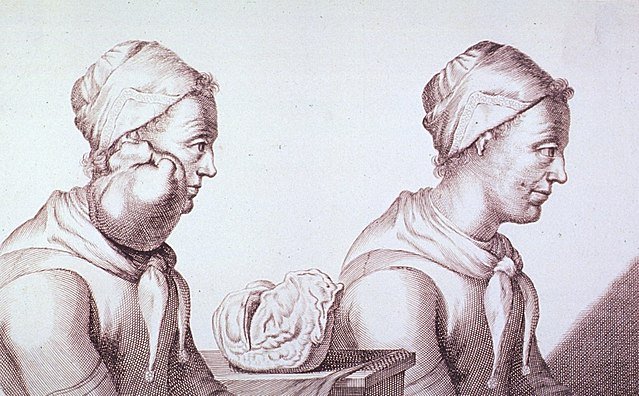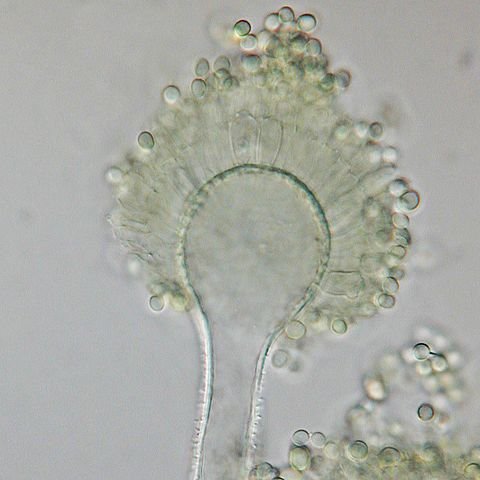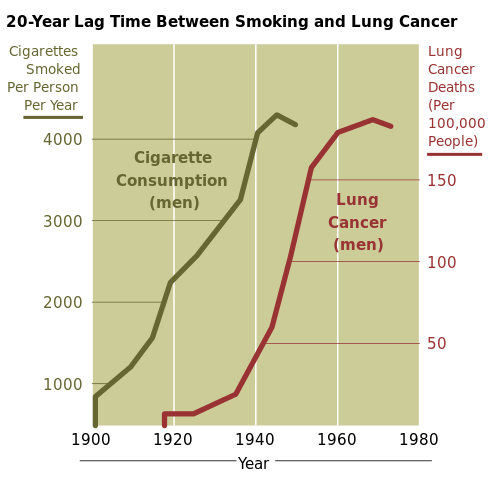HEALTH AND DISEASES: Types of Cardiovascular Disease #3
Hello, dear readers. Greetings to you all. This post is a continuation to my previous series on HEALTH AND DISEASES: Types of Cardiovascular Disease #2; where I discussed the link between smoking and atherosclerosis, the link between diet and atherosclerosis and how to treat some cardiovascular diseases. I ended the post by shedding more light on what cancer is, steps on how it develops and finally on why cancer is so dangerous to human. Today, I will give an exposition on the biological basis of cancer and the battle against the deadly disease.

THE BIOLOGICAL BASIS OF CANCER
Although there are many different types of cancer, we now know that all cancers are the result of DNA damage in cells. If this damage occurs in specific genes, control of cell division in that cell can be lost and the cell van begin to divide continuously. I will quickly revise the basics of cell division before going on to look at how control of the process can break down.
Genes and the control of cell division
Different types of cell in the body divide at different rates. Some, such as the neurons in the brain, do not divide at all after we reach the age of about 2 years. Others, such as liver cells, divide only rarely. Others, notably epithelial cells, divide as often as once every couple of days. Even so, all cell division is tightly controlled at the genetic level.
Some genes in the cell code for proteins that activate other genes to produce growth factors, chemicals that start a sequence of events that lead to cell division. Other genes code for proteins that inhibit cell division. Genes are turned on and off according to the cell type and its position in the body. Needless to say, the interplay of all the different genes involved is very complex. However, scientists have identified a few genes that, when they suffer a mutation, can cause the cell to lose control of its division pattern. These cells have been named proto-oncogenes, or just oncogenes.
The human genome contains many oncogenes. One, the ras oncogene, is on chromosome 11. It codes for a chemical called G-protein, which basically acts as an on-switch for cell division. Normal G-protein is usually inactivated very quickly by cellular enzymes. This means that the G-protein on-switch for cell division is only temporary and is switched off most of the time.
If the DNA in the ras oncogene is damaged, however, it codes for a G-protein that cannot be inactivated. In a cell with a defective ras gene, the switch for cell division always says 'on'. Cells that lose control of cell division can become cancerous, and ras mutations are associated with 20 to 30 per cent of all human cancers.
However, mutations in oncogenes are much more common than the cancer rate would suggest. This is because the cell has a second, back-up control. It also has genes called tumour suppressor genes. These prevent cells dividing too quickly, until the body's immune system can either kill the rogue cells, or until the cell's enzymes manage to repair the damage in the DNA.
The tumour suppressor genes do an excellent job, but their DNA too can be damaged and they can suffer mutations. If these genes fail to work, this back-up system is lost and any cells that start dividing uncontrollably are more likely to go on to develop into cancers. A gene called p53, on chromosome 17, has been well studied, and about half of all human cancers have been linked with a mutation in this tumour suppressor gene.
Oncogenes and tumour suppressor genes can both mutate because of DNA damage caused during life. Occasionally, though, faulty forms are passed on to the next generation. People who are born with a gene defect in one of these genes are said to have a genetic predisposition to cancer. They are more likely to develop cancer and often do so at a relatively early age.

RISK FACTORS AND CANCER
So, two different classes of gene in the cell can fail and can result in cancer. But what does the damage to the DNA of these genes? Many things in our environment are carcinogenic. Some of the risk factors for cancer are connected with our lifestyle, others are present in our environment. In both cases, we can usually modify our cancer risk by changing our behaviour. Here we look at just a few of the major lifestyle and environmental factors that affect cancer risk.
Smoking
Smoking is now one of the major causes of lung cancer in the developed world. Each year, lung cancer due to smoking leads to around 40 000 deaths in the UK (a large sports stadium holds about 40 000 people) and to around 175 000 deaths in the USA.
The link between smoking and lung cancer has been recognized for many years but it is only recently that scientists have identified a compound in tobacco smoke that binds to and damages the p53 tumour suppressor gene. The longer a person smokes and the greater the number of cigarettes they have a day, the greater the chance that the p53 gene will be damaged.
Diet
There is strong evidence that some of the things we eat and drink contain substances that are carcinogenic:
- Drinking alcohol is linked to 3 per cent of cancers in the western world, causing higher rates of mouth, throat and oesophageal cancer. Smokers who drink large amounts of alcohol are particularly at risk.
- Heavily salted and smoked foods also increase the risk of developing mouth, throat and oesophageal cancer. About 1 per cent of all cancers are due to eating salted and smoked foods regularly.
- Eating a diet very high in over-cooked meats is thought to increase the risk of stomach cancer, because charring red meat (such as blackening it on a barbecue) produces breakdown products that are carcinogenic.
- Food contaminated with aflatoxins, substances produced by the fungus Aspergillus flavus, have been linked to specific cases of liver cancer. In some parts of Africa, groundnuts (peanuts) contaminated with this fungus are a staple food and liver cancer is common. Aflatoxins are chemically modified by liver enzymes. This modified aflatoxin affects the base guanine, which is part of the DNA molecule.

Apart from these specific examples, the cancer risk of eating specific foods is quite difficult to assess. People's diets are extremely varied and many studies involving hundreds of thousands of people are just beginning to uncover some definite patterns. However, the American Cancer Society states that, on the basis of current scientific evidence, one-third of the 564 800 cancer deaths that occurred in the USA around 1996 were related to diet.
At the moment, the generally accepted view is that the diet to avoid is one high in red meat, particularly meat that is charred, high in animal fats and low in fibre, fresh fruits and vegetables.
Exposure to radiation
We are all exposed to a common source of radiation – the Sun. Exposure to sunlight is linked with melanoma, a form of skin cancer that accounts for about 2 per cent of all cancer deaths. It occurs most often in fair-skinned people and is caused by the ultraviolet light in sunlight. Particularly dangerous are the higher frequency UVB rays that can damage DNA: UVB radiation causes 90 per cent of all skin cancers.
The cancer risk posed by other forms of radiation seems to be low. Excessive radiation such as the fallout from the atomic bomb blasts at Hiroshima and Nagasaki led to cancers in the survivors, but the low levels emitted by nuclear power plants do not seem to increase cancer risk. There is also little evidence to support the theories that objects such as mobile phones, microwaves and overhead power lines increase the risk of cancer.
Exposure to chemical carcinogens
Substances such as asbestos, benzene, methanal (formaldehyde) and diesel exhaust are carcinogenic. This is known because of instances in the past where people have been exposed to high levels – usually through their work.
Exposure to microorganisms
Specific microorganisms are linked to the development of some cancers:
- The Epstein-Barr virus, which causes glandular fever, has been linked to some cancers of the lymph gland in the western world and with nose and throat cancer in Asia.
- HIV leads indirectly to an increased cancer risk: people with AIDS have a much higher rate of a skin cancer called Kaposi's sarcoma because their immune system cannot weed out rogue cancer cells.
- Infection with genital wart viruses is associated with higher rates of cancer of the cervix. Women who have many sexual partners are more likely to be exposed to wart viruses and so run a higher risk of developing cervical cancer.
- Infection with the bacterium Helicobacter pylori, recently found to cause stomach ulcers and gastritis, also causes higher rates of stomach cancer.

Cancer and heredity
About 5 to 10 per cent of cancers arise because of faulty genes that can pass from one generation to the next. In the past 25 years, several such genes have been identified. However, before the genes were recognized, it was clear that some cancers were hereditary:
- Some families have many members all with the same type of cancer.
- Cancer tends to develop early - in people under 50.
CANCER - THE PATTERNS OF DISEASE
In the nineteenth century, cancer caused the deaths of fewer people than it does today. We must be careful how we interpret this statement. Infectious diseases were much more important 150 years ago as causes of death that they are now. Because of this, the average age of death was lower than it is today, and fewer people lived to the ages where cancers become increasingly common. In addition, medical treatment was far more basic and methods of diagnosis meant that the disease could be recognized only when it had reached an advanced stage.
If you were to compare data that shows the deaths from different types of cancer in one particular year, with the corresponding figures from 10 years earlier, you would notice differences. Between 1986 and 1996, for example, stomach cancer declined because of the discovery that various gastric problems, including cancer, were caused by infection with Helicobacter pylori. Treating people for this infection cut stomach cancer cases significantly during this time.
You might also notice an increase in the incidence of some cancers. Breast cancer cases, for example, increased between 1986 and 1996 because of advances in methods of screening and diagnosis. Much of the apparent increase was probably due to doctors being able to detect the condition earlier than they would have before 1986.
However, often it is not as easy to account for differences. Most of the time, statistics on cancer death rates and cancer incidence are difficult to interpret.
It might be better to ask some questions: Are the differences actually statistically significant? An apparent increase in cases might be only reflection of an underlying trend, or the differences could be just the result of chance. Has there been a change in exposure to particular risk factors? Could we explain any changes in the incidence of lung and bladder cancer in terms of changes in smoking habits? Is the picture incomplete, and does this confuse the issue? Why are some cancers more common in one sex than in the other? Answers to questions such as these are important if we are to understand the factors affecting the trends shown by such data.
The next topic of discussion is that of the battle against cancer; talking of prevention of cancer, screening for cancer and its various treatments. All these would be discussed in my next post.
Thanks for coming.
REFERENCES
https://pdfs.semanticscholar.org/c15c/28fb7d9ede1944b9bc4073a7a7f2af2feb06.pdf
https://www.ncbi.nlm.nih.gov/pubmed/8718354
http://sphweb.bumc.bu.edu/otlt/MPH-Modules/PH/PH709_Cancer/PH709_Cancer_print.html
https://www.cambridge.org/core/books/biological-basis-of-cancer/E6DAF213205F8DEAC3FB15844E5C086A
https://www.ncbi.nlm.nih.gov/pubmed/8452330
https://www.cancercenter.com/community/blog/2018/02/what-are-the-environmental-risk-factors-and-how-can-i-avoid-them
https://academic.oup.com/bmb/article-pdf/68/1/71/25151821/ldg023.pdf
https://www.cdc.gov/cancer/risk_factors.htm
https://www.medicinenet.com/cancer_causes/article.htm
https://www.cancer.gov/about-cancer/causes-prevention/risk
https://www.cancernetwork.com/articles/epidemiology-cancer-and-prevention-strategies
https://www.thelancet.com/journals/lancet/article/PIIS0140-6736(13)62224-2/fulltext
https://www.ncbi.nlm.nih.gov/pmc/articles/PMC5394024/
https://www.ncbi.nlm.nih.gov/pubmed/20651196
https://www.ncbi.nlm.nih.gov/pmc/articles/PMC27446/
https://www.cancerresearchuk.org/health-professional/cancer-statistics/statistics-by-cancer-type/lung-cancer
Interesting reading, maybe you're interested @riccc96
!discovery 40
This post was shared and voted inside the discord by the curators team of discovery-it
Join our community! hive-193212
Discovery-it is also a Witness, vote for us here
@tipu curate
Thanks for your contribution to the STEMsocial community. Feel free to join us on discord to get to know the rest of us!
Please consider supporting our funding proposal, approving our witness (@stem.witness) or delegating to the @steemstem account (for some ROI).
Please consider using the STEMsocial app app and including @stemsocial as a beneficiary to get a stronger support.
Thanks for the write up on cancer. It's one of the deadliest diseases killing people in the world. When cells experience mutation, uncontrolled cell multiplication is inevitable. Many people don't even know that they're sick until maybe it has reached the terminal stage. Then advance in technology like you said also aid detection when compared to the previous years.
Yes, u're right. Thanks for the great contribution, @steepup. It's very much appreciated.
Congratulations @loveforlove! You received a personal badge!
You can view your badges on your board And compare to others on the Ranking